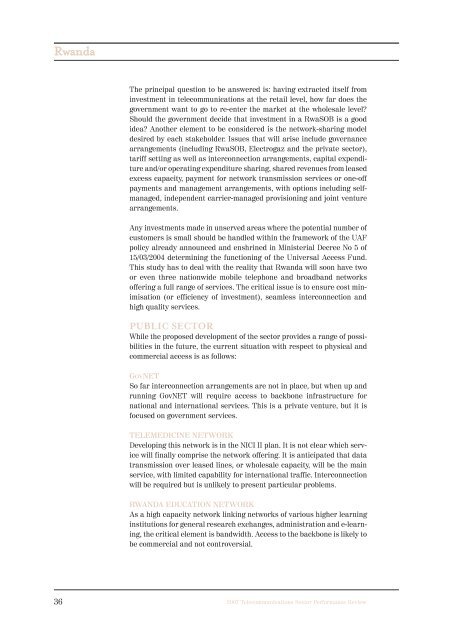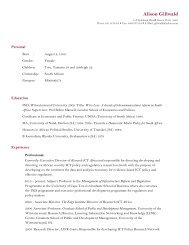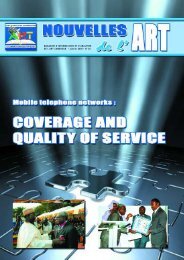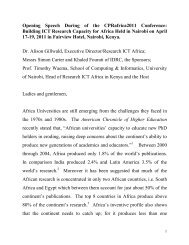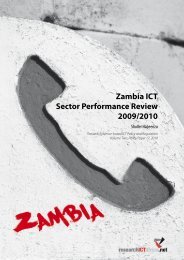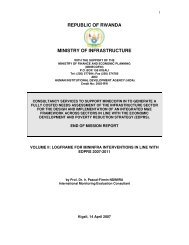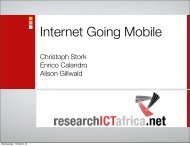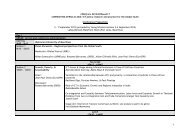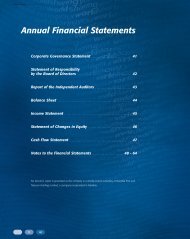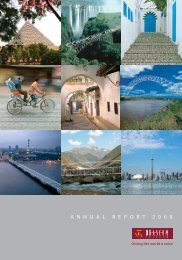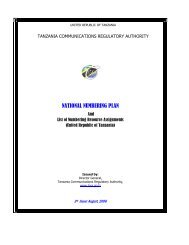Rwanda Telecommunications Sector Performance Review 2007
Rwanda Telecommunications Sector Performance Review 2007
Rwanda Telecommunications Sector Performance Review 2007
Create successful ePaper yourself
Turn your PDF publications into a flip-book with our unique Google optimized e-Paper software.
<strong>Rwanda</strong><br />
The principal question to be answered is: having extracted itself from<br />
investment in telecommunications at the retail level, how far does the<br />
government want to go to re-enter the market at the wholesale level?<br />
Should the government decide that investment in a RwaSOB is a good<br />
idea? Another element to be considered is the network-sharing model<br />
desired by each stakeholder. Issues that will arise include governance<br />
arrangements (including RwaSOB, Electrogaz and the private sector),<br />
tariff setting as well as interconnection arrangements, capital expenditure<br />
and/or operating expenditure sharing, shared revenues from leased<br />
excess capacity, payment for network transmission services or one-off<br />
payments and management arrangements, with options including selfmanaged,<br />
independent carrier-managed provisioning and joint venture<br />
arrangements.<br />
Any investments made in unserved areas where the potential number of<br />
customers is small should be handled within the framework of the UAF<br />
policy already announced and enshrined in Ministerial Decree No 5 of<br />
15/03/2004 determining the functioning of the Universal Access Fund.<br />
This study has to deal with the reality that <strong>Rwanda</strong> will soon have two<br />
or even three nationwide mobile telephone and broadband networks<br />
offering a full range of services. The critical issue is to ensure cost minimisation<br />
(or efficiency of investment), seamless interconnection and<br />
high quality services.<br />
PUBLIC SECTOR<br />
While the proposed development of the sector provides a range of possibilities<br />
in the future, the current situation with respect to physical and<br />
commercial access is as follows:<br />
GOVNET<br />
So far interconnection arrangements are not in place, but when up and<br />
running GovNET will require access to backbone infrastructure for<br />
national and international services. This is a private venture, but it is<br />
focused on government services.<br />
TELEMEDICINE NETWORK<br />
Developing this network is in the NICI II plan. It is not clear which service<br />
will finally comprise the network offering. It is anticipated that data<br />
transmission over leased lines, or wholesale capacity, will be the main<br />
service, with limited capability for international traffic. Interconnection<br />
will be required but is unlikely to present particular problems.<br />
RWANDA EDUCATION NETWORK<br />
As a high capacity network linking networks of various higher learning<br />
institutions for general research exchanges, administration and e-learning,<br />
the critical element is bandwidth. Access to the backbone is likely to<br />
be commercial and not controversial.<br />
36 <strong>2007</strong> <strong>Telecommunications</strong> <strong>Sector</strong> <strong>Performance</strong> <strong>Review</strong>


